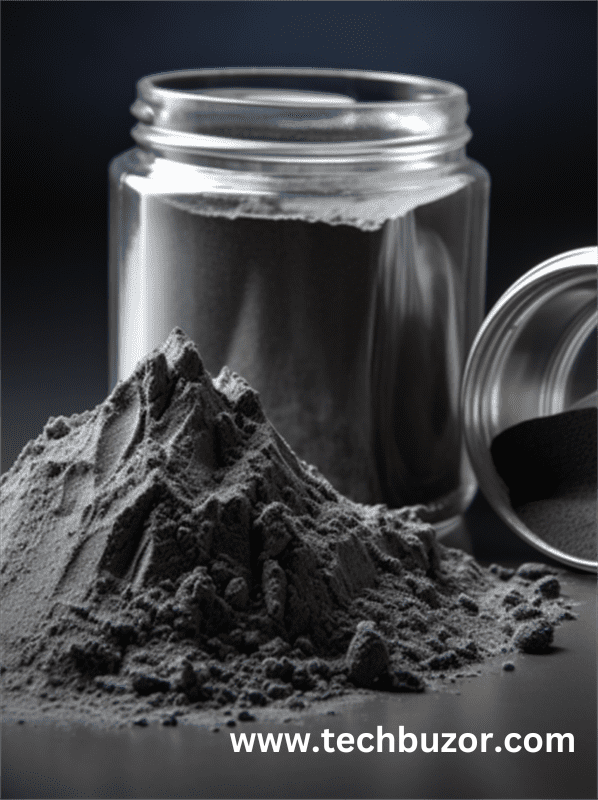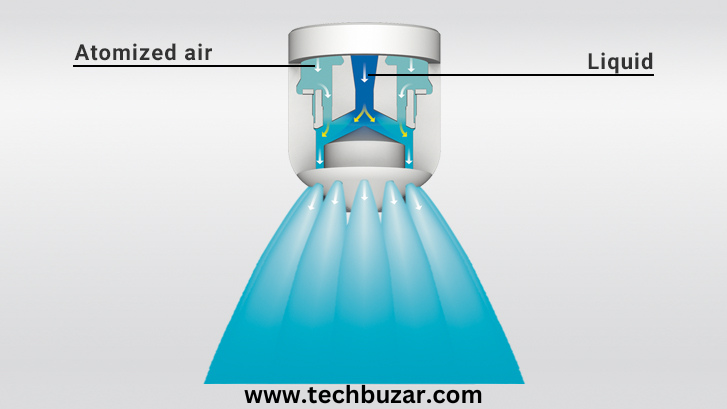
Atomization Technology:100% Revolutionizing Industries Across the Globe in positive aspects
Atomization technology, although often overlooked, plays a crucial role in numerous industries, revolutionizing processes and products alike. From enhancing efficiency to improving product quality, its impact is far-reaching and undeniable.
1. Introduction to Atomization Technology
Atomization technology involves breaking down liquid substances into small droplets or particles, facilitating their dispersion or application in various processes. It finds applications in fields as diverse as manufacturing, healthcare, and agriculture. Atomization technology finds extensive use in industries such as automotive, pharmaceuticals, food and beverage, and many others. For example, in the automotive industry, atomization is essential for fuel injection systems, ensuring precise delivery of fuel into combustion chambers for optimal engine performance and fuel efficiency.
2. Understanding the Basics of Atomization
Atomization relies on the conversion of bulk liquid into droplets or particles, typically through the application of mechanical energy. This process can be achieved through various methods, each offering unique advantages and applications. The primary goal of atomization is to create a fine mist or spray of liquid particles, allowing for their dispersion or application in various processes. This process is crucial in industries where precise control over the distribution of liquids is required, such as manufacturing, healthcare, and agriculture. Electrostatic atomization is yet another method, where the liquid particles are charged before dispersion, leading to improved deposition efficiency and reduced overspray. This method finds applications in painting, powder coating, and agricultural spraying.
3. The Importance of Atomization in Various Industries
– Automotive
Atomization technology is pivotal in fuel injection systems, enabling precise delivery of fuel into combustion chambers for optimal engine performance and fuel efficiency. Atomization technology ensures that the fuel is transformed into a fine mist or spray of tiny droplets before it enters the combustion chamber. This finely atomized fuel mixture allows for optimal combustion, resulting in improved engine performance, fuel efficiency, and reduced emissions.
- Port Fuel Injection (PFI): In PFI systems, fuel is injected into the intake ports just before the intake valve. This enables improved blending of fuel and air, leading to enhanced combustion efficiency.
- Gasoline Direct Injection (GDI): GDI systems are a type of DI system specifically designed for gasoline engines. They utilize high-pressure injectors to deliver fuel directly into the combustion chamber, resulting in enhanced fuel efficiency and power output.
- Diesel Injection: Diesel engines use a different type of fuel injection system compared to gasoline engines. In diesel engines, fuel is injected directly into the combustion chamber at extremely high pressures, leading to more efficient combustion and higher power output.
– Pharmaceutical
Atomization Technology In pharmaceutical manufacturing, atomization facilitates the production of inhalable medications, intravenous solutions, and controlled-release formulations, ensuring accurate dosing and bioavailability. Additionally, atomization technology is used in the development of controlled-release formulations and drug delivery systems. By atomizing drug solutions or suspensions and incorporating them into carriers such as microspheres or nanoparticles, pharmaceutical scientists can control the release kinetics and pharmacokinetics of medications, enabling sustained This approach enhances patient compliance, reduces dosing frequency, and minimizes side effects, making it particularly valuable for the treatment of chronic conditions and long-term therapies.

– Food and Beverage
Atomization is integral in the production of powdered ingredients, flavorings, and encapsulated additives, enhancing product consistency and shelf stability. One of the key applications of atomization technology in the food and beverage sector is in the production of powdered ingredients. Many food products require ingredients in powdered form for ease of handling, storage, and incorporation into recipes. Atomization technology allows for the transformation of liquid ingredients such as flavorings, colors, and additives into fine powders through processes like spray drying. This ensures uniform particle size distribution and preservation of flavor and nutritional properties, making the powdered ingredients suitable for a wide range of applications in food processing.
4. Different Methods of Atomization
– Pressure Atomization
This method involves forcing liquid through a small orifice at high pressure, breaking it into fine droplets. It is commonly used in spray painting, coating, and combustion applications. In pressure atomization, the liquid is pressurized using pumps or compressors to generate the necessary force for atomization. The pressurized liquid is then forced through a narrow nozzle or spray tip, where it is expelled at high velocity. As the liquid exits the nozzle, it encounters resistance from the surrounding air, causing it to break up into small droplets.
– Ultrasonic Atomization
Ultrasonic atomizers use high-frequency vibrations to disperse liquid into a fine mist, offering precise control and minimal energy consumption. This method is often utilized in humidification, medical nebulization, and aroma diffusion. In medical nebulizers, ultrasonic atomization is employed to convert liquid medications into aerosols or inhalable mists, which can then be inhaled by patients for the treatment of respiratory conditions such as asthma, COPD, or respiratory infections. The fine droplets produced by ultrasonic atomization ensure efficient delivery of the medication to the lungs, where it can be rapidly absorbed into the bloodstream for therapeutic effect.
– Electrostatic Atomization
Electrostatic atomizers charge liquid particles before dispersion, resulting in improved deposition efficiency and reduced overspray. They are extensively employed in painting, powder coating, and agricultural spraying. In painting and coating applications, electrostatic atomization is used to apply paint or coating materials onto surfaces with precision and efficiency. The charged droplets are attracted to the grounded or oppositely charged surface, resulting in uniform coverage and adhesion. This reduces paint waste and improves coating quality, making it ideal for applications where a high level of finish is required.
5. Applications of Atomization Technology
– Spray Drying
Atomization is essential in spray drying processes, where liquid solutions or suspensions are transformed into dry powder form, preserving product properties and facilitating storage and transport.
- Food and Beverage: Spray drying is employed to produce powdered ingredients such as milk powder, coffee, flavors, and food additives. It helps preserve the flavor, aroma, and nutritional properties of the original liquid ingredients while extending shelf life and enhancing storage stability.
- Pharmaceuticals: In the pharmaceutical industry, spray drying is used to produce dry powder formulations of medications, excipients, and drug delivery systems. It enables the encapsulation of active pharmaceutical ingredients (APIs) for controlled-release formulations, inhalable medications, and oral dosage forms.
- Chemicals: Spray drying is utilized in the chemical industry for the production of catalysts, pigments, dyes, and specialty chemicals. It allows for the creation of fine and uniform particles with tailored properties such as particle size, morphology, and surface area, meeting specific application requirements.
- Ceramics: In the ceramics industry, spray drying is employed to produce granules or powders used as raw materials for manufacturing ceramic tiles, pottery, and advanced ceramics. It facilitates the production of homogeneous and free-flowing powders with controlled composition and particle size distribution.
– Fuel Injection
Atomization technology is fundamental in fuel injection systems of internal combustion engines, ensuring efficient combustion, reduced emissions, and optimal power output.
There are several types of fuel injection systems used in automotive engines, including:
- Port Fuel Injection (PFI): In PFI systems, fuel is injected into the intake ports, just before the intake valve. This allows for better mixing of fuel and air, resulting in more efficient combustion and improved fuel economy.
- Direct Injection (DI): DI systems inject fuel directly into the combustion chamber, bypassing the intake ports. This enables more precise control over fuel delivery and combustion, leading to enhanced power output and fuel efficiency.
- Gasoline Direct Injection (GDI): GDI systems are a type of DI system specifically designed for gasoline engines. They utilize high-pressure injectors to deliver fuel directly into the combustion chamber, resulting in improved fuel economy and reduced emissions.
- Diesel Injection: Diesel engines use a different type of fuel injection system compared to gasoline engines. In diesel engines, fuel is injected directly into the combustion chamber at extremely high pressures, leading to more efficient combustion and higher power output.
– Coating Processes
In surface coating applications, atomization enables uniform deposition of paints, coatings, and adhesives, enhancing product aesthetics, durability, and performance.
There are several coating methods used in industrial applications, each with its own advantages and suitability for specific materials and environments:
- Painting: Atomization Technology Painting is one of the most common and versatile coating processes, involving the application of liquid paint onto surfaces using brushes, rollers, or spray guns. Paints can be formulated to provide protection against corrosion, UV radiation, chemicals, and abrasion, as well as to enhance aesthetics. Different types of paints, such as epoxy, polyurethane, and acrylic, offer varying levels of durability and performance for different applications.
- Powder Coating: Powder coating is a dry finishing process where powdered paint is electrostatically charged and sprayed onto a grounded surface. The charged particles adhere to the surface and are then heated to fuse and form a durable coating. Powder coating offers excellent resistance to corrosion, chemicals, and impact, making it ideal for automotive parts, appliances, and outdoor furniture.
- Electroplating: Electroplating is a process that involves depositing a metallic coating onto a substrate using electrolysis. The substrate, typically made of metal, is immersed in a plating solution containing metal ions, while an electric current is passed through the solution. This causes the metal ions to be reduced and deposited onto the substrate, forming a thin, uniform coating. Electroplating is commonly used to provide corrosion resistance, improve conductivity, and enhance the aesthetics of metal parts.
- Galvanizing: Galvanizing is a coating process that involves immersing steel or iron components in molten zinc to form a protective zinc coating. The zinc coating provides corrosion protection by acting as a barrier between the substrate and the environment. Galvanizing is widely used in construction, automotive, and infrastructure applications, where steel structures are exposed to harsh environmental conditions.
- Anodizing: Atomization Technology is anodizing is an electrochemical process used to create a protective oxide layer on the surface of metals, such as aluminum and titanium. The metal substrate is immersed in an electrolyte solution and subjected to an electric current, causing oxidation to occur on the surface. The resulting oxide layer provides enhanced corrosion resistance, hardness, and aesthetic appeal, making anodizing suitable for architectural, aerospace, and consumer electronics applications.
6. Advantages of Atomization Technology
– Increased Surface Area
Atomization increases the surface area of liquid particles, promoting rapid evaporation, dissolution, or reaction, thereby improving process efficiency and performance.
In many industrial and scientific applications, increasing surface area is desirable because it enhances the material’s reactivity, adsorption capacity, and interaction with its surroundings. This has numerous practical implications across various fields:
- Chemistry: In chemical reactions, increased surface area allows for greater contact between reactants, leading to faster reaction rates and improved efficiency. Catalysts, for example, are often designed with high surface area to maximize their effectiveness in promoting chemical reactions.
- Catalysis: Catalysts play a crucial role in accelerating chemical reactions by providing an alternative pathway with lower activation energy. Materials with high surface area, such as porous metals, zeolites, and nanoparticles, are commonly used as catalysts due to their large surface-to-volume ratio, which increases the number of active sites available for reaction.
- Adsorption: Adsorption is the phenomenon in which molecules adhere to the surface of either a solid or a liquid. Materials with increased surface area have more sites available for adsorption, making them effective adsorbents for removing pollutants from air and water, as well as for gas separation and purification processes.
- Energy Storage: Atomization Technology in energy storage devices such as batteries and supercapacitors, increased surface area improves the electrode’s capacity to store and release energy. Porous materials with high surface area, such as activated carbon and graphene, are commonly used in energy storage applications due to their large surface-to-volume ratio and high electrical conductivity.
– Improved Product Quality
Atomization ensures uniform distribution of active ingredients or additives, resulting in products with consistent quality, texture, and functionality.
There are several ways in which product quality can be improved:
- Enhanced Materials and Components: Using higher quality materials and components in manufacturing processes can significantly improve product durability, reliability, and performance. Materials with superior strength, resistance to wear and tear, and tolerance to environmental conditions contribute to a longer product lifespan and reduced maintenance requirements.
- Tightened Quality Control: Implementing stringent quality control measures throughout the production process helps identify and address defects or inconsistencies early on. This ensures that only products meeting predefined quality standards are released to the market, reducing the likelihood of defects reaching customers and enhancing brand reputation.
- Innovative Design and Engineering: Atomization Technology investing in research and development to create innovative designs and engineering solutions can lead to products with enhanced functionality, efficiency, and user experience. Designing products with user-centric features, intuitive interfaces, and ergonomic considerations improves usability and customer satisfaction.
- Continuous Improvement Initiatives: Atomization Technology Implementing continuous improvement initiatives such as Lean manufacturing, Six Sigma, or Total Quality Management (TQM) fosters a culture of ongoing improvement within organizations. By systematically identifying areas for enhancement, reducing waste, and optimizing processes, companies can consistently elevate product quality and performance.
– Enhanced Efficiency
Atomization allows for precise control over droplet size, spray pattern, and flow rate, optimizing resource utilization and minimizing waste in various processes.
There are several ways in which efficiency can be enhanced:
- Streamlined Processes: Identifying and eliminating inefficiencies in workflows and procedures can streamline operations and reduce unnecessary delays or bottlenecks. By mapping out processes, identifying areas for improvement, and implementing lean principles, organizations can optimize resource allocation and enhance productivity.
- Automation and Technology Integration: Leveraging automation technologies and integrating digital solutions into operations can significantly improve efficiency. Automated processes, robotics, and advanced software systems can perform repetitive tasks more quickly and accurately than manual methods, freeing up human resources for higher-value activities.
- Optimized Supply Chain Management: Improving supply chain efficiency by reducing lead times, minimizing inventory levels, and enhancing logistics coordination can result in cost savings and faster response times. Utilizing data analytics, predictive modeling, and supply chain visibility tools can help organizations make informed decisions and adapt quickly to changing market demands.
- Employee Training and Development: Investing in employee training and development programs enhances skills, knowledge, and job satisfaction, leading to higher levels of productivity and efficiency. Providing employees with opportunities for continuous learning, cross-training, and skill development fosters a culture of innovation and adaptability within the organization.
7. Challenges and Limitations in Atomization technology
– Energy Consumption
Some atomization methods require substantial energy inputs, contributing to operational costs and environmental impact, prompting the need for energy-efficient alternatives.
There are several factors that influence energy consumption patterns:
- Population Growth and Urbanization: Rapid population growth and urbanization lead to increased energy demand for residential, commercial, and transportation needs. Urban areas with higher population densities tend to have higher energy consumption per capita due to greater infrastructure requirements and transportation demands.
- Economic Development and Industrialization: Economic growth and industrialization drive up energy consumption as industries expand production, manufacturing processes become more energy-intensive, and demand for goods and services rises. Developing countries undergoing industrialization often experience a surge in energy consumption as they strive to meet the growing demand for electricity, transportation, and infrastructure.
- Technological Advances: Technological advancements play a significant role in shaping energy consumption patterns. Innovations in energy-efficient appliances, lighting, HVAC (heating, ventilation, and air conditioning) systems, transportation vehicles, and industrial processes can help reduce energy consumption and improve overall efficiency.
– Maintenance Costs of Atomization technology
Atomization equipment necessitates regular maintenance and cleaning to sustain performance and prevent clogging or wear, adding to operational expenses and downtime.
Maintenance costs can be categorized into several types:
- Preventive Maintenance: Preventive maintenance involves scheduled inspections, servicing, and replacement of components to prevent equipment failure and minimize unexpected breakdowns. Regular maintenance tasks such as lubrication, cleaning, and calibration help identify and address potential issues before they escalate, reducing the likelihood of costly repairs or replacements.
- Corrective Maintenance: Corrective maintenance, also known as reactive maintenance, involves repairs performed in response to equipment failures or malfunctions. These costs include labor, materials, and downtime associated with troubleshooting, diagnosing, and fixing problems as they arise. While corrective maintenance is often unavoidable, minimizing downtime and optimizing repair processes can help reduce associated costs.
- Predictive Maintenance: Predictive maintenance utilizes data analysis, sensors, and predictive modeling to anticipate equipment failures and schedule maintenance activities proactively. By monitoring key performance indicators, such as equipment vibrations, temperature, and fluid levels, organizations can identify early warning signs of potential failures and intervene before they occur, minimizing downtime and reducing maintenance costs.
8. Future Trends in Atomization Technology
– Nanotechnology Integration
The integration of nanomaterials and nanoscale phenomena holds promise for enhancing atomization efficiency, enabling precise control over particle size and morphology for advanced applications. Effectively managing maintenance costs is essential for optimizing operational performance, maximizing asset reliability, and controlling overall operating expenses. By implementing proactive maintenance strategies, leveraging technology and data analytics, and continuously improving maintenance processes, organizations can minimize downtime, extend asset lifespans, and achieve cost savings over the long term.
– Sustainable Atomization Techniques
Advancements in sustainable atomization techniques, such as using renewable energy sources or eco-friendly solvents, aim to minimize environmental footprint and promote resource conservation. Overall, sustainable atomization techniques play a vital role in reducing environmental impact, conserving resources, and improving process efficiency across various industries. By adopting these techniques, organizations can achieve atomization with minimal energy consumption, reduced emissions, and improved product quality, contributing to a more sustainable future.
9. Conclusion of Atomization technology
Atomization technology continues to drive innovation and progress across various industries, offering solutions to complex challenges and unlocking new possibilities. As research and development efforts persist, the future holds immense potential for further enhancing atomization processes and applications, paving the way for a more efficient, sustainable, and interconnected world. By adopting sustainable atomization techniques, industries can achieve significant benefits, including reduced energy consumption, lower emissions, improved product quality, and enhanced process efficiency. These techniques align with the goals of sustainability, contributing to environmental stewardship and responsible resource management.
FAQs
What is atomization technology?
- Atomization technology involves breaking down liquid substances into small droplets or particles for dispersion or application in various processes.
What are the primary methods of atomization?
- Common methods of atomization include pressure atomization, ultrasonic atomization, and electrostatic atomization.
How is atomization technology used in the automotive industry?
- In the automotive industry, atomization technology is crucial in fuel injection systems, ensuring precise fuel delivery for optimal engine performance and efficiency.
What are the advantages of atomization technology?
- Atomization technology offers increased surface area, improved product quality, and enhanced efficiency in various manufacturing and processing applications.
What are the future trends in atomization technology?
- Future trends in atomization technology include the integration of nanotechnology for precise control and sustainable techniques to minimize environmental impact.


